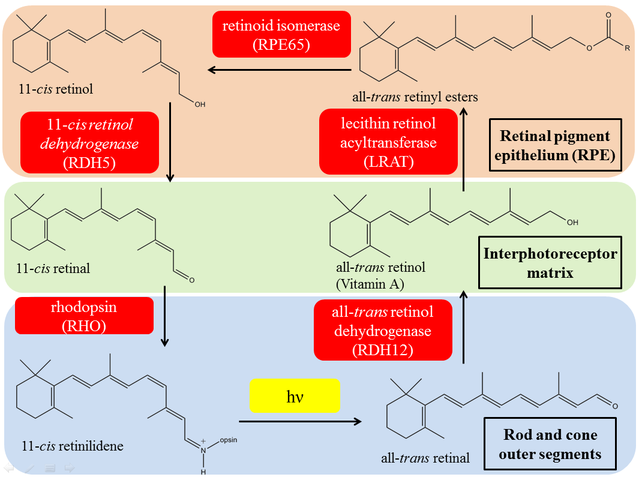Difference between Retinol and Retin -A
Skin is the largest organ in a human body. However, some people are not aware that the skin acts as the first line of defense in order to protect the internal parts of the body from harmful agents. Also, the skin acts as a sensor and can easily damaged or affected due to adverse weather conditions and air pollutants. There is no wonder why all the noticeable signs and symptoms of ageing first appear on the skin. In this regard, it is very essential to take care of the skin. Proper skin care should be practiced to delay the onset of ageing and at the same time enhances the overall appearance of a person. One of the important elements available to us today is Vitamin A. This vitamin and its derivatives significantly improve the skin’s vitality and contribute to a person’s overall well-being.
Vitamin A
Vitamin A is responsible for the production of red blood cells, supports the immune system, maintains normal vision and promotes a healthy skin. It is necessary for skin repair and maintenance. It increases cell turnover rate to help rebuild tissue, prevents inflammation, acne and dry skin. In addition, it also reduces fine lines, wrinkles and age spots. This vitamin has antioxidant properties which neutralizes, if not eradicate free radicals that causes tissue and cellular damage.
Vitamin A is available in nature in the form of retinal or retinaldehyde. This vitamin can be acquired generally in animal products, but numerous plant-based render beta-carotene which is regenerated by the body into Vitamin A. Apart from this, there are also certain derivatives of vitamin A that are popularly known to benefit the skin. Some of these are Retin-A and Retinol. So what are these? What are their benefits and how do they differ from each other? Read on.
-
Retin -A
Retin-A is also known as Tretinoin and is derived from retinoic acid (synthetic derivative of Vitamin A). The use of Retin-A particularly on the onset of the treatment can cause skin irritation, redness, dryness and peeling. Results are only seen after 1 to 2 months using Retin-A. Treatment should be continuous otherwise those wrinkles and age spots you thought had vanished will re-appear. With the right use, Retin-A can improve skin complexion and rejuvenate it as well
-
Retinol
Retinol is a derivative of Vitamin A, which is converted to retinoic acid that stimulates the production of collagen. This helps plump out wrinkles and prevents the ageing process of the skin. Retinol also prevents skin damage caused by the collagenase enzyme which breaks down the layers of the skin when the skin is exposed to UV rays. Retinol is not only good for matured skin with wrinkles and age spots, but also for younger skin plagued with acne problems.
Summary: Retinol vs. Retin-A
|
Retinol |
Retin-A |
|
|
Origin |
It is formed in the body by the process of hydrolysis of retinyl esters |
Derived from retinoic acid, a synthetic derivative of vitamin A |
|
Availability |
Over-the-counter |
Most are prescription-based |
|
Indications |
Treatment of acne and reduces wrinkles and other age spots. It contains moisturizers or emollients to hydrate the skin. |
Treatment of Acne and has anti-wrinkle effect. It also reduces the ageing process of the skin. |
|
Potency |
Retinol does not appear as effective as Retin-A when it comes to anti ageing because retinol needs to be converted to retinoic acid –its useable form. |
Retin-A is stronger and has a direct effect on the skin when applied as a topical use. |
|
Action |
Promotes cell renewal and regeneration by stimulating collagen and elastin making the skin look brighter and younger. |
Speeds up skin renewal and exfoliation process. It also enhances collagen production. |
|
Dose |
Retinol is milder compared to Retin-A but it should be use as prescribed. |
Use Retin-A in smallest amount as possible to avoid harmful side effects. |
|
Side Effects |
Side effects and adverse reactions are rare. Retinol are milder that Retin-A. |
Irritation, redness, peeling, dryness and flaking of the skin are the common side effects of Retin-A |
|
Best Suited for |
Sensitive skin |
Normal to Oily skin |
|
Contraindication |
Pregnant, nursing mothers and Individuals who are hypersensitive to the components of retinol. |
Pregnant, nursing mothers, and Individuals who have sensitive skin and who are hypersensitive to the components of Retin-A. |
Many prominent skin care companies uses both Retinol and Retin-A in their products. However, the effectiveness of these products depends on the individual’s reaction to it. Nevertheless, Vitamin A and its derivatives are very important for the well being of an individual, but remember to use these moderately or within the prescribed dosage. Too much of anything can do more harm than good.
- The Difference between Pemphigus and Pemphigoid - July 9, 2015
- The Difference between Flu and Influenza - July 9, 2015
- The Difference Between a Wound and an Ulcer - June 22, 2015
Search DifferenceBetween.net :
Leave a Response
References :
[0]http://www.hsph.harvard.edu/nutritionsource/vitamin-a/
[1]http://www.news-medical.net/health/Vitamin-A-Functions.aspx
[2]https://www.princeton.edu/~achaney/tmve/wiki100k/docs/Retinol.html
[3]http://www.livestrong.com/article/415718-the-difference-between-retinol-and-retin-a/
[4]http://en.wikipedia.org/wiki/Retinol_dehydrogenase

